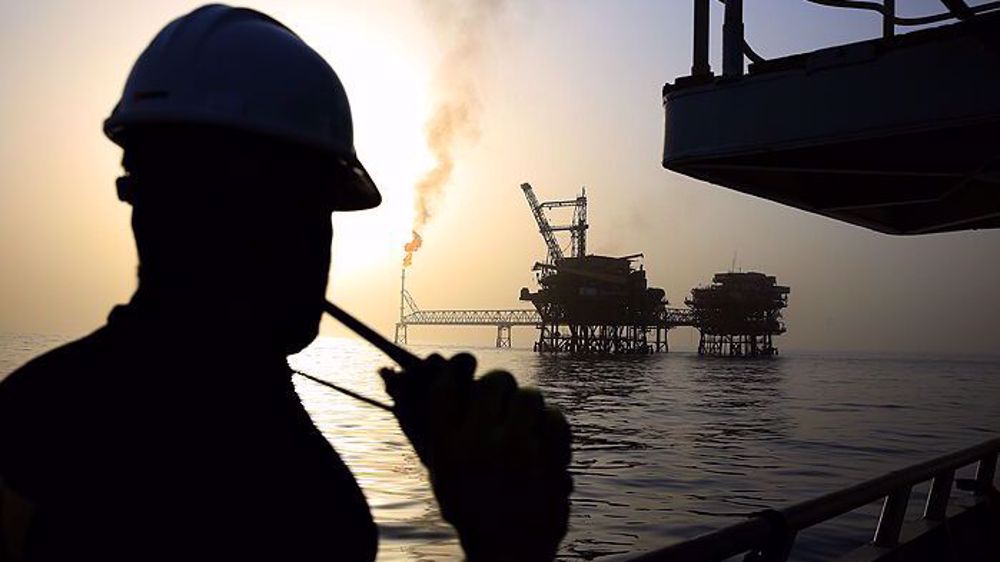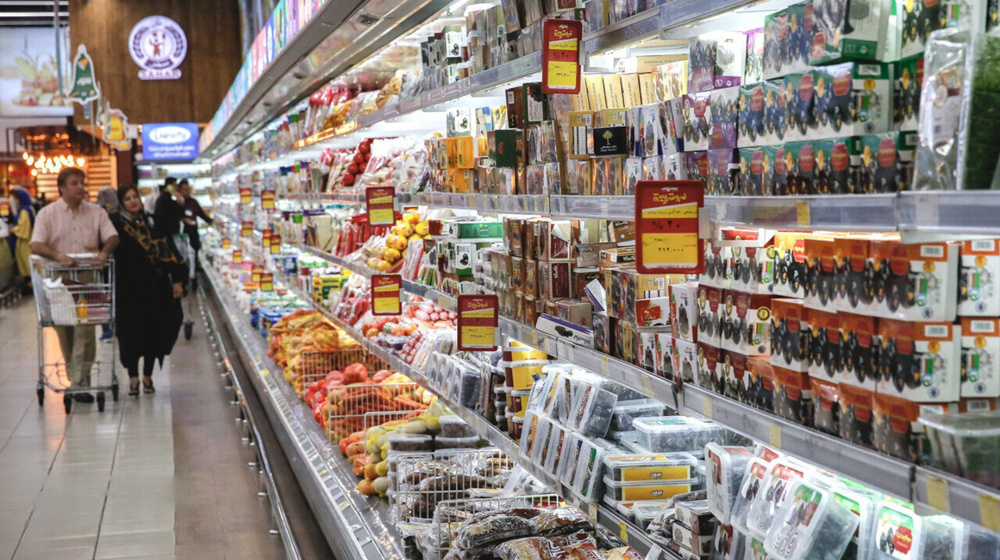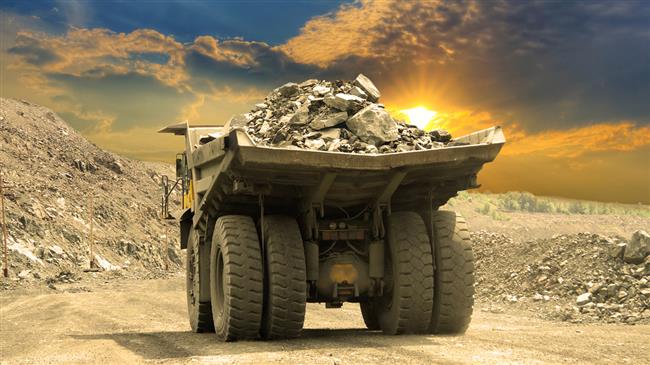US seizes $7mn of Iran assets in latest ‘highway robbery’
The US government says it has seized $7 million in Iranian assets for “victims of terrorism”, in the latest hostile move by outgoing President Donald Trump.
In a statement, the Justice Department said the money was the US share of a civil forfeiture that targeted alleged attempts to violate sanctions on Iran with transfers of about $1 billion of Iranian-owned funds to accounts around the world.
Acting Assistant Attorney General David Burns alleged that the funds forfeited Tuesday had been destined to benefit “criminal actors who engaged in an elaborate scheme to violate US sanctions against Iran”.
Under US pressure, billions of dollars of Iran’s oil money and other funds are held up in several countries. The assets have been subject to a witch hunt by the Americans who have used Washington’s animosity toward the Islamic Republic to easily win lawsuits against the country in US courts.
Last October, reports said a US court had ordered Iran to pay more than $1.4 billion in punitive and compensatory damages to the family of a former FBI agent who allegedly disappeared during a visit to an Iranian island in March 2007.
Iran has denounced US seizures of its frozen assets in the United States as “highway robbery” and hauled the United States before the International Court of Justice (ICJ) at The Hague.
Sanctions on steel companies
The new seizure came as the US Treasury Department imposed sanctions on several companies in connection with Iran's steel industry in a bid to dry up the resource-rich country’s sources of revenue.
A statement by the department said the US was targeting a China-based supplier of graphite electrodes, 12 Iranian metal producers and three foreign-based sales agents of a major Iranian metals and mining holding company.
Graphite electrode supplier Kaifeng Pingmei New Carbon Materials Technology (KFCC) was named as the Chinese entity which, according to the department, had completed multiple transactions with various Iranian steel companies since December 2019, including a 300 metric ton electrode shipment to Iran's Pasargad Steel Complex.
The 12 Iranian steel manufacturers now designated by the US government have a combined annual output capacity that "reaches millions of metric tons of steel product," the Treasury said.
Among the designated companies were metals and mining holding company Middle East Mines and Mineral Industries Development Holding Co (MIDHCO) as well as Sirjan Iranian Steel and Zarand Iranian Steel Co which it operates.
Subject to sanctions were also Germany-based GMI Projects Hamburg, China-based World Mining Industry and UK-based GMI Projects, which the US Treasury Department described as MIDHCO's foreign-based subsidiaries.
The Treasury Department ordered that all property and interests in property of the designated companies in the US or in the possession or control of US persons to be blocked and reported to the department's Office of Foreign Assets Control.
Other blacklisted Iranian companies were the Gilan Steel Complex Co, Khazar Steel Co, Vian Steel Complex, South Rouhina Steel Complex, Yazd Industrial Constructional Steel Rolling Mill, West Alborz Steel Complex, Esfarayen Industrial Complex and Bonab Steel Industry Complex.
The US State Department announced additional sanctions on KFCC and Iran-based Hafez Darya Arya Shipping Co (HDASCO) and its principal executive officer Majid Sajdeh for selling graphite to Iran-based South Kaveh Steel Co and Arfa Iron and Steel Co.
Steel industry unfazed
Iran’s industrial metals, specifically steel, have been the key target in the Trump administration’s maximum pressure campaign, but officials have said the sector is unfazed and keeps growing.
The US has especially singled out those involved in transfers or exports to Iran of graphite electrodes and needle coke, which are essential materials for Iran's steel industry
Iran, however, says its producers have obtained the technology to make graphite electrodes.
Graphite electrodes are used to melt scrap in electric arc furnaces to produce new steel. Needle coke is used as a key material for graphite electrodes in an electric arc furnace.
Iran is a leading producer of steel in the world, with officials saying exports continue despite the US sanctions.
The country plans to raise steel output to 55 million tonnes a year by 2025, of which 20 to 25 million tonnes would be earmarked for export.
According to officials, Iran has currently 35 million tonnes of steel production capacity. Steel output is expected to hit 28 million tonnes this year in March, when the current Persian year concludes.
It shows the sector – 10 percent of Iran’s export economy - is weathering the headwinds of the most intensive US sanctions which were unleashed in May 2019 when Washington targeted Tehran’s export revenues from its industrial metals.
At the time, President Donald Trump put world nations on notice against allowing Iranian steel and other metals into their ports, saying it would no longer be tolerated.
Iran’s steel industry is export-oriented, but it does not depend on foreign technology, with officials saying the zero to 100 of a steel mill can now be designed and built in the country.
Even before the US sanctions, Iran’s steel exports faced a hostile terrain in Europe where the bloc’s executive body, the European Commission, levied trade tariffs against Iranian products.
Still, there is a buoyant domestic market where more than 50 industries in Iran are linked to the construction industry which uses steel as a basic ingredient.
Steel is also the key component in Iran’s automotive industry which is the largest in the Middle East and North Africa. Iran further has a massive oil and gas industry and a sprawling transportation and water supply network.
On the export front, China holds the key to the growth of Iran’s metals industry. The Asian powerhouse is the world’s biggest steelmaker and consumer of iron ore.
“Should China ignore these sanctions, the impact would be almost nil. Iran is cooperating with China as part of the Belt and Road Initiative and this would further strengthen ties between the nations,” Tyler Broda, analyst at RBC Capital Markets, once told Financial Times.
Iran used to export 23 to 25 million tonnes of iron ore a year, but much of it is now directed to the value-added production chain in the country.
Putin: Russia will use force to achieve goals if Ukraine stalls peace negotiations
The Year That Was: Best of ‘Iran First’ in 2025, the year of major Iranian breakthroughs
German journalist says Israeli forces raped her after abducting her from Gaza flotilla
VIDEO | Press TV's news headlines
VIDEO | Israeli forces launch wide-scale military operation in Qabatiya, south of Jenin
Trump-backed push brings Jolani regime, Israel closer to deal: Israeli media
VIDEO | Iraqi govt. rejects any kind of normalization with Israeli regime
VIDEO | Venezuela's medicine prices soar to unaffordable level amid US blockades













 This makes it easy to access the Press TV website
This makes it easy to access the Press TV website